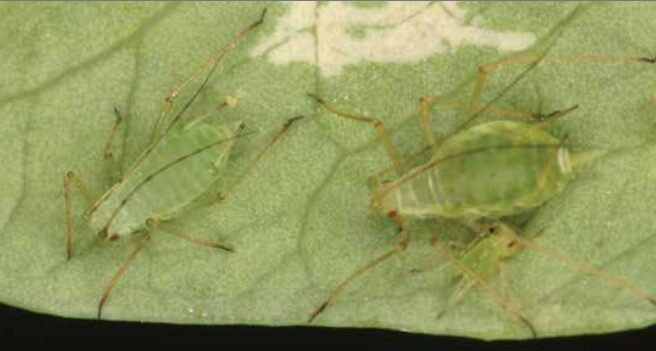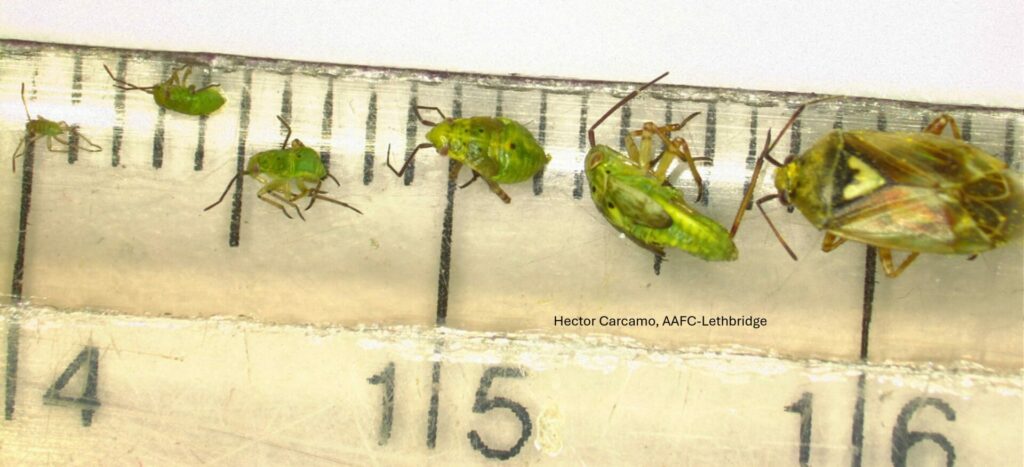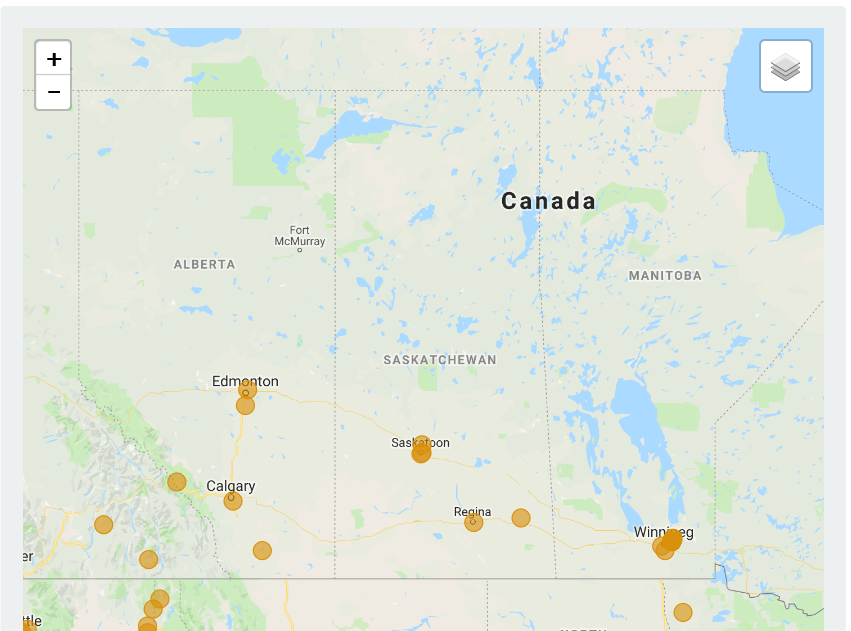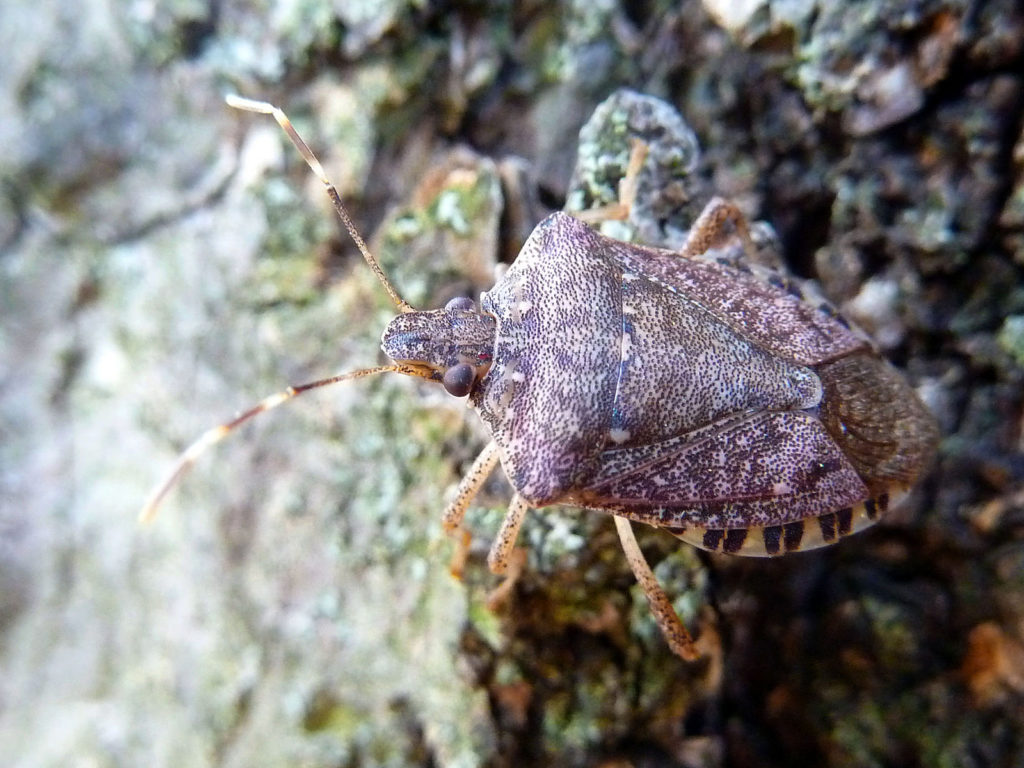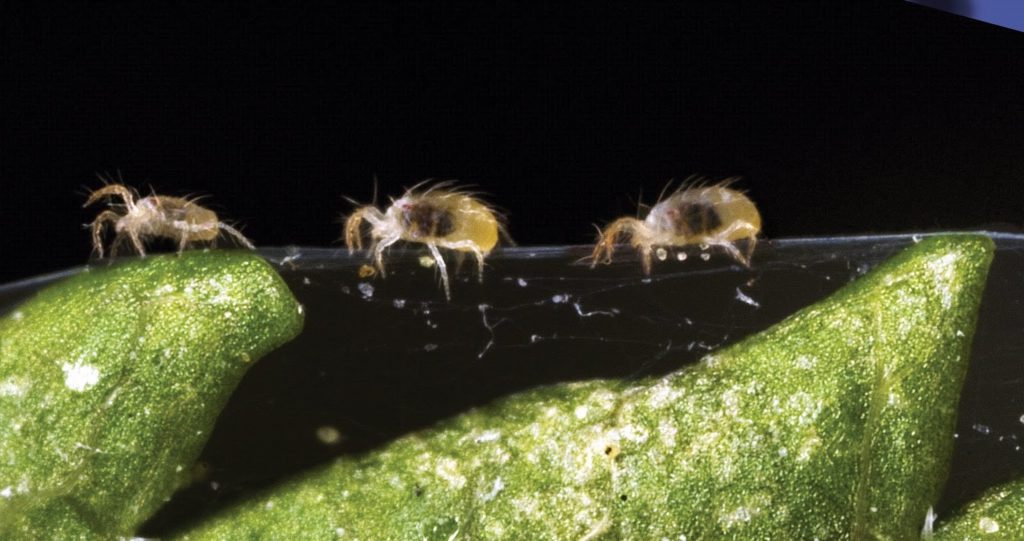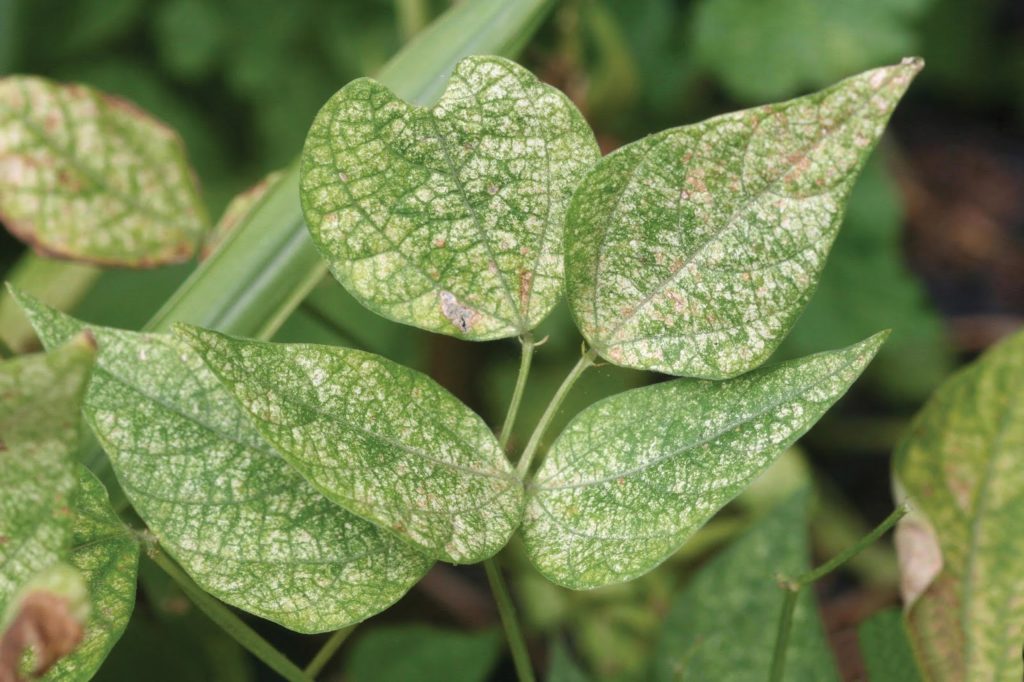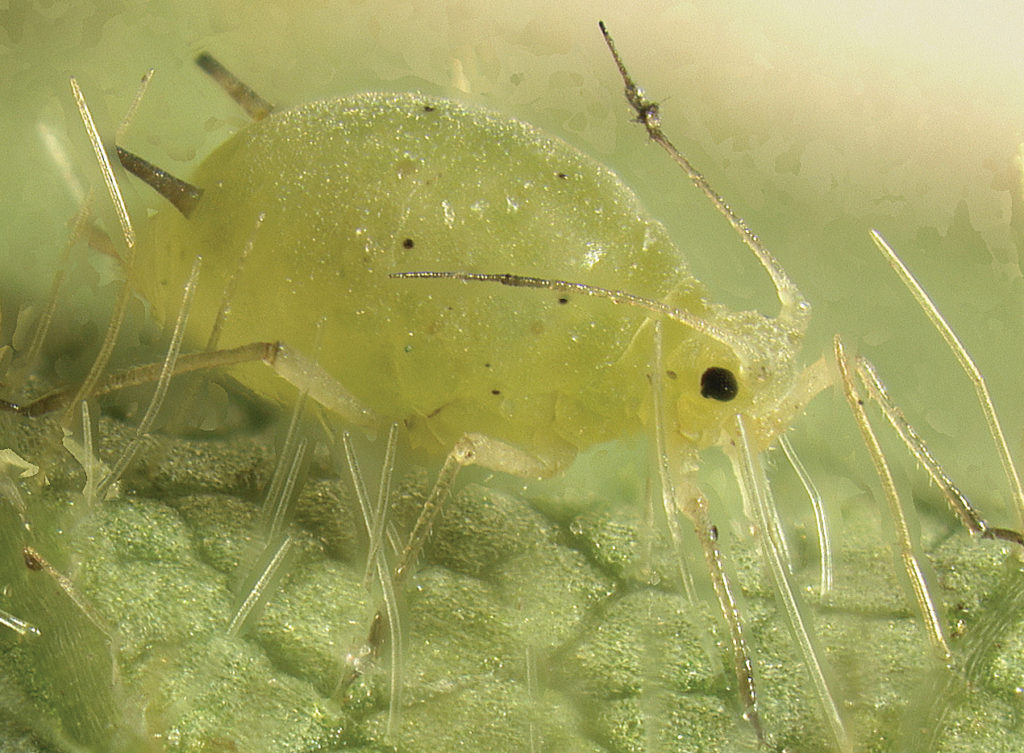A new species of midge was discovered in the Midwestern United States following reports of damage to soybean plants in 2018. The new species, Resseliella maxima, or soybean gall midge is now known to occur in Iowa, Missouri, Nebraska, South Dakota and Minnesota. Soybean gall midge is thought to have been present in these states for almost 10 years before its discovery and identification, based on earlier reports of damage now attributed to soybean gall midge.
Soybean gall midge has not been observed or reported in Canada. However, it is important to be aware of this insect due to its relatively close proximity to soybean growing areas in Canada.
Life History and Identification: Adult soybean gall midge are small flies, about 5 mm long, that have grey or black coloured bodies and black legs with white or yellow coloured stripes. Like swede midge and canola flower midge, the adults are small and difficult to observe. Female soybean gall midge lay eggs soon after emerging and live for less than a week. Eggs are fist laid when soybeans are at the V2 or V3 growth stage (approximately early June) into fissures around the base of the stems. Larvae develop while feeding on stem tissues, interrupting movement of nutrients and water to the rest of the plant. Larval feeding damage also increases the risk of soybean plants contracting diseases.
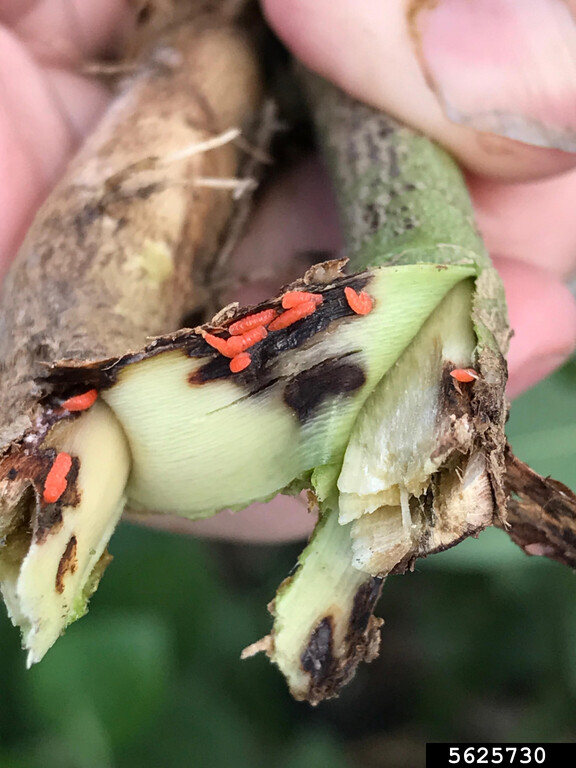
Once larval development is complete, the bright orange larvae drop to the soil to pupate. Three generations per growing season have been observed in the Midwestern United States. In late summer, larvae of the last generation overwinter as larvae in the soil and pupate in the spring.
Soybean gall midge damage to soybean crops is most apparent at the edge of fields. Up to 100% yield losses have been observed in the outer 15 m of affected soybean fields studied in Nebraska. The amount of soybean gall midge damage decreases as one moves farther into the interior of infested fields.
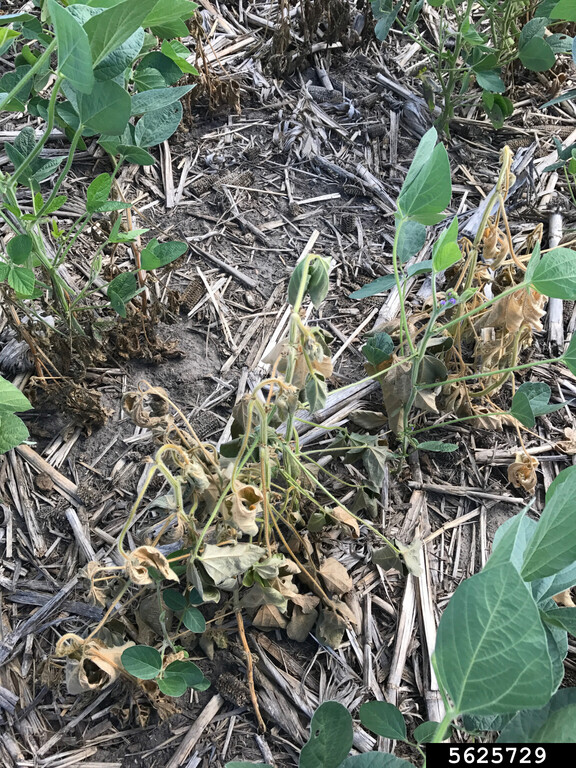
Because this such a new pest, research to better understand its biology, distribution, and options for its management is still underway.
Learn more about the soybean gall midge and find more pictures of this pest and the damage it causes to soybean plants by checking out these resources:
- “Soybean Gall Midge: Discovery of a Delicate and Destructive New Species,” an article published in Entomology Today
- “Soybean gall midge (Diptera: Cecidomyiidae), a new species causing injury to soybean in the United States” published with open access by Journal of Integrated Pest Management (open access)
- The Iowa State University Extension and Outreach soybean gall midge webpage
- The Crop Protection Network soybean gall midge webpage
You can also keep up-to-date with new information and observations of soybean gall midge range expansion by checking out the Soybean Gall Midge Alert Network and iNaturalist.

